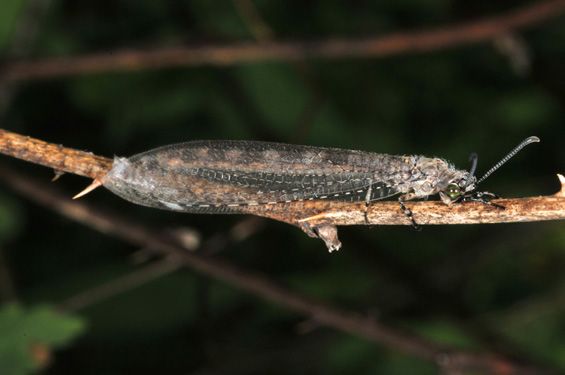
Common Name: Antlion
Scientific Name: Myrmeleontidae: spp
Status: Beneficial predator
Beneficial Stage: Immature
Biology: Antlions are beneficial predators of small insects.
Adult antlions resemble a damselfly in body shape, but are poor fliers, usually only fly at night and have long clubbed antennae. They measure 1�-inches in length, have a long, slender abdomen, and two pairs of narrow, multi-veined wings.
The immature antlion (sometimes called a doodlebug due to the winding trails it leaves in the sand as it crawls about) bears a relatively enormous pair of hollow mandibles, each with several sharp, teeth-like projections. These sharp hypodermic needle-like jaws are designed to pierce its victim and suck fluids out.
Some antlion larvae excavate a characteristic conical pit in the sand that appears as a mini volcano. It is created as the antlion crawls backwards in circles, while flipping out sand grains with its long jaws. As it moves round and round, the pit gradually gets deeper and deeper. Eventually the crater reaches 2 inches across and almost as deep, with very smooth, steep walls. The larva then hides at the bottom of the pit, partially burried. Only its open jaws protrude from the sand. When small crawling insects, such as ants, fall into the pit they cannot climb out because of the loose sand on the steep walls. When it slides to the bottom it is seized by the powerful jaws of the antlion larva in an instant. After consuming all the contents, the lifeless, dry carcass is flicked out of the pit, and the pit is readied for a new victim. Antlions are capable of killing a variety of insects, and can even subdue small spiders.
 Value: The antlion is a generalist predator. It feeds on ants and other small crawling insects and spiders that can be a pest and nuisance to humans.
|